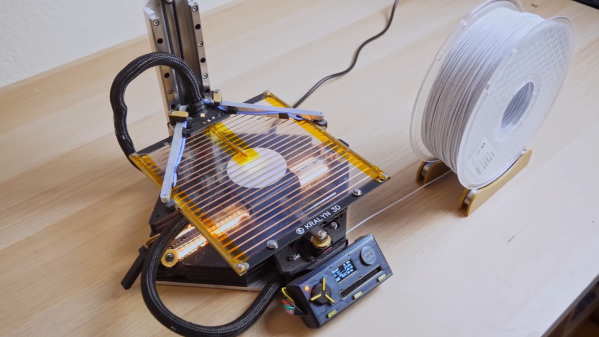In this era of cheap turn-key machines, the idea of actually building your own desktop 3D printer might seem odd to some. But if you’re looking for a challenge, and want to end up with a printer that legitimately sets itself apart from what they’re stocking on Amazon these days, then take a look at the Lemontron.
We’ve been keeping tabs on the development of this open source 3D printer for some time now, and just before Christmas, the files finally were released for anyone who wants to try putting one together themselves. There’s currently no formal kit available, but once you’ve printed out all the parts, there’s a very nice bill of materials you can find on the website which will tell you everything you need to complete the assembly — and critically — where you can get it.
Continue reading “Open Source Lemontron 3D Printer Is Ready To Build”


![[James] and his Lemontron portable 3D printer](https://hackaday.com/wp-content/uploads/2024/11/lemontron-1200.jpg?w=600&h=450)
![Overhead photo of [James]' hands assembling the Lemontron Portable 3D printer](https://hackaday.com/wp-content/uploads/2024/11/My-3d-printer-is-almost-ready-to-release-16-56-screenshot.png?w=400) Recent video updates show the Lemontron in action, printing impressively large and complex models. It tackled a marble run with 80-degree unsupported overhangs and a ‘comically large’
Recent video updates show the Lemontron in action, printing impressively large and complex models. It tackled a marble run with 80-degree unsupported overhangs and a ‘comically large’ 











